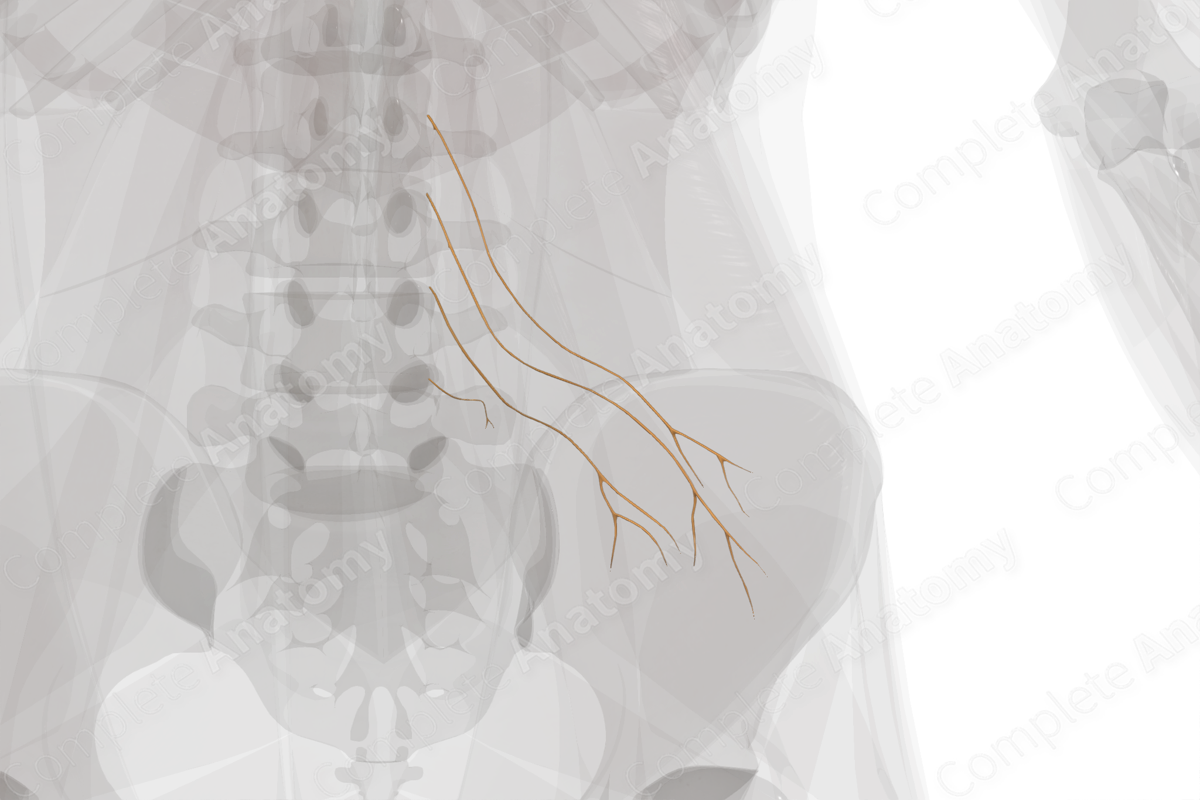
Lateral Branches of Posterior Rami of Lumbar Nerves (Left)
Rami posteriores laterales nervorum lumbalium
Read moreDescription
The posterior rami of each lumbar nerve give off a large lateral branch immediately after traversing through the intertransverse ligament and medial intertransverse muscle. The lateral branch of each lumbar posterior ramus courses caudally, dorsally, and laterally, deep to iliocostalis and longissimus components of the lumbar erector spinae muscles, of which they innervate. The upper three lateral branches (L1-L3) subsequently emerge from the lateral border of iliocostalis lumborum and pierces the dorsal layer of thoracolumbar fascia to become cutaneous over the gluteal region. These are collectively known as the superior gluteal cutaneous nerves (or superior cluneal nerves). The lateral branch at L4 remains intermuscular, while there is typically no lateral branch at L5 (Bogduk, Wilson and Tynan, 1982).
Related parts of the anatomy
References
Bogduk, N., Wilson, A. S. and Tynan, W. (1982) 'The human lumbar dorsal rami', J Anat, 134(Pt 2), pp. 383-97.




